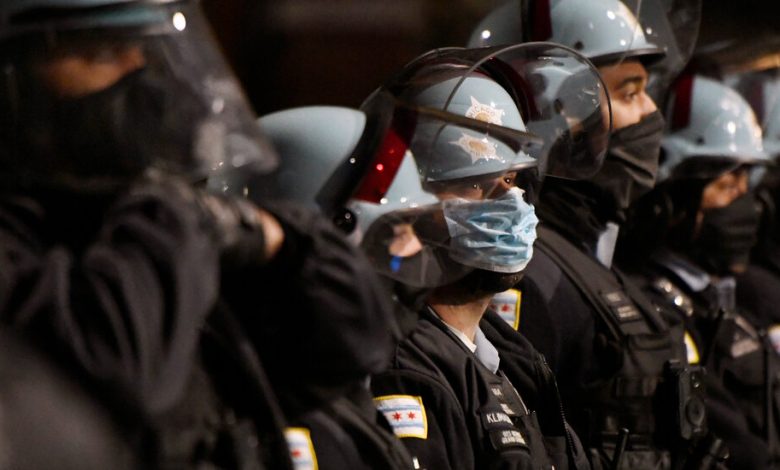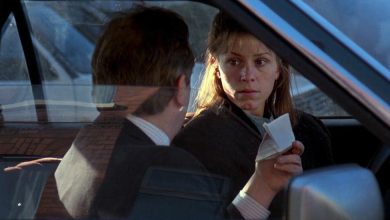Undeterred Criminals Plus Demoralized Cops Equals More Crime

Two years ago, a white Chicago police officer named Eric Stillman fatally shot Adam Toledo, an unarmed 13-year-old Mexican American with no criminal record, while the boy was complying with the officer’s orders following a late-night foot chase. The killing brought greater awareness to police brutality in Latino communities, yet no charges were filed against Stillman. Since then, Chicago has been able to turn a corner on violent crime, thanks partly to investments in after-school youth programs. Murders are down by 20 percent from two years ago.
That’s one version of events, the version favored by the progressive left.
Another version goes like this. On March 29, 2021, at 2:36 a.m., Stillman and his partner responded to a call that shots were being fired. Stillman pushed Ruben Roman, a 21-year-old with a criminal record, to the ground and chased Toledo, who was holding a 9-millimeter handgun, down a dark alley. Stillman yelled “drop it.” Toledo tossed the gun behind a fence and turned toward him. The officer fired the fatal shot less than a second after Toledo got rid of the gun. Stillman then immediately jumped to Toledo’s aid and called for an ambulance.
Roman was acquitted of firing the weapon at a passing car; his lawyers argued that it might have been Toledo who had fired the weapon.
Stillman was placed on administrative leave. Chicago’s interim police superintendent, Eric Carter, recommended last week that Stillman be fired.
Homicides are, in fact, down in Chicago, but they remain at some of the highest rates since the 1990s, and overall crime spiked by 41 percent between 2021 and 2022. Last weekend alone, mass hooliganism overwhelmed Chicago’s downtown while 11 people were killed and 26 wounded in shootings across the city.
Maybe there’s a lesson in this, simple and old-fashioned as it may seem. When bad guys walk free and brave cops have to fear for their jobs for doing their jobs, crime tends to go up. And when the national conversation about the Adam Toledo tragedy revolves around the officer’s split-second, life-or-death decision instead of the question “What is a 13-year-old child doing with a 21-year-old criminal firing a gun at 2:30 a.m.?” then we are deeply confused about the nature of our problems, to say nothing of the way to a solution.
A similar dynamic is playing out in other big cities, too. Police morale is abysmal. One way in which this fact registers is in high levels of voluntary resignations and early retirements, leading to critical staffing shortages. As of mid-March, New Orleans had 944 police officers — down from 1,200 just three years ago, despite increased recruitment efforts. Last year the city registered a 100 percent increase in shootings over 2019. “Criminals know there’s not enough officers on the street! They know this!” Delores Montgomery, a ride-share driver, recently told NPR. Fewer cops; more crime: Who would have thought?
New Orleans isn’t alone. A recent academic analysis found that 11 out of the 14 cities it studied suffered from higher-than-expected losses to their police after the George Floyd protests of 2020, with Seattle losing the highest proportion of its force. One possible unfortunate result, the study suggests, is that, as good cops depart, the quality of newer recruits also suffers. That may help explain the appalling police brutality in the killing of Tyre Nichols in Memphis in January.
Then there’s the other side: The growing sense of impunity among the criminally inclined.
In Chicago, the proportion of crimes reported that resulted in arrest, which stood at nearly 31 percent in 2005, fell to 12.3 percent in 2021, according to an analysis last year by The Chicago Sun-Times. Even that may be an undercount, since fewer crimes in the city are being reported both to and by the police.
In New York, where major crimes rose by 22 percent last year, complaints of shoplifting have nearly doubled over the past five years — while the arrest rate since 2017 fell by almost half. A report by Hurubie Meko in The Times notes that a mere 327 shoplifters accounted for one-third of all arrests and that they had been “arrested and rearrested more than 6,000 times.” Why? “Law enforcement and trade groups have blamed a proliferation of organized shoplifting crews, repeat offenders and the new state bail law that they argue has enabled such offenders to avoid jail time.”
In other words, lax enforcement when it comes to petty criminality has led to big-time criminality. And the consequence of supposedly “victimless” crimes like shoplifting has created a palpable sense of disorder, menace and fear — each conducive to the anything-goes atmosphere in which crime invariably flourishes.
Will things get better? Eventually, yes, when a critical mass of voters recovers the simple combination of common sense and political will. But whether it occurs sooner or later is a difference that will be measured in thousands of lives, harmed or ended by the crime we collectively let happen.
The Times is committed to publishing a diversity of letters to the editor. We’d like to hear what you think about this or any of our articles. Here are some tips. And here’s our email: [email protected].
Follow The New York Times Opinion section on Facebook, Twitter (@NYTopinion) and Instagram.





